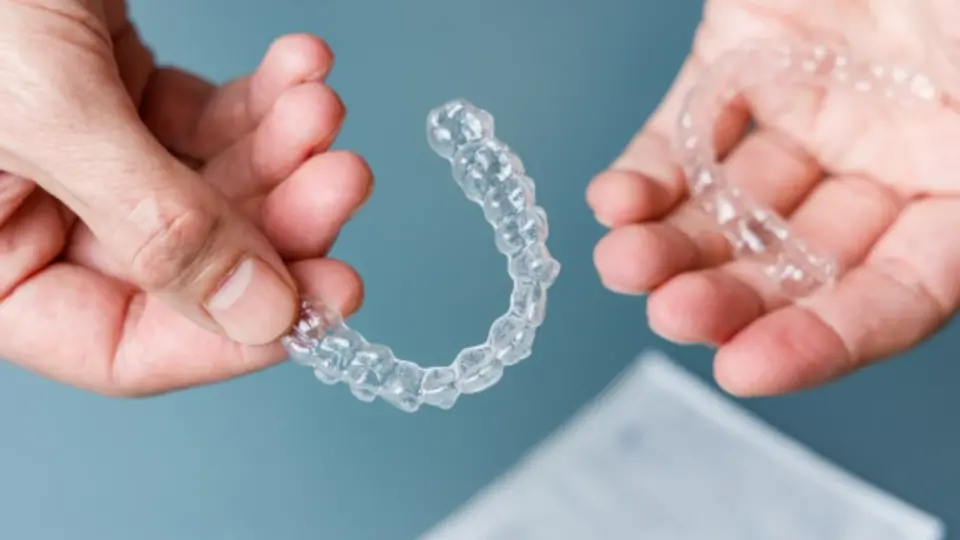Gum disease, or periodontal disease, is a common yet serious condition that can significantly affect oral health and overall well-being if left untreated. Understanding the progression, symptoms, associated health conditions, and differences between its stages is essential for effective diagnosis and treatment.
How Does Gum Disease Progress Over Time If Left Untreated?
Gum disease progresses in stages, starting with mild symptoms that may go unnoticed and potentially developing into more severe conditions that can lead to tooth loss and other health complications. Initially, gum disease manifests as gingivitis, characterized by redness, swelling, and bleeding of the gums. Currently, the damage can be reversed through the implementation of appropriate dental care and enhanced oral hygiene practices.
By addressing gingivitis, we can prevent it from advancing to periodontitis. In this advanced stage, the inner layer of the gum and bone gracefully separate from the teeth, creating pockets that have the potential to become infected. The body’s immune system actively combats the bacteria as the plaque spreads below the gum line.
Through the bacterial toxins and the body’s natural response to infection, the bone and connective tissue that hold teeth in place begin to break down. Over time, the teeth may gradually loosen and eventually need to be removed.
What Are The Common Symptoms Of Advanced Gum Disease?
Advanced gum disease, or periodontitis, exhibits several symptoms that are more severe than the early signs of gingivitis. These symptoms include persistent bad breath or bad taste in the mouth, receding gums, deep pockets forming between teeth and gums, shifting or loose teeth, and changes in the way teeth fit together when biting.
Additionally, patients may experience painful chewing and increased sensitivity due to the exposure of tooth roots as gums recede.
These symptoms significantly impact daily life and can worsen without proper treatment, leading to the loss of teeth and more severe health issues. Recognizing these symptoms early and seeking dental care is crucial in managing and treating the condition effectively.
Are There Any Underlying Health Conditions That May Contribute To Gum Disease?
Several underlying health conditions can contribute to the onset and progression of gum disease, making management of these conditions a key aspect of comprehensive gum disease treatment.
Diabetes is notably linked to gum disease; high blood sugar levels associated with diabetes make the gums more susceptible to infection, leading to a higher risk of gum disease. Additionally, conditions that weaken the immune system—such as HIV/AIDS and certain cancers—can also predispose individuals to periodontal problems.
Another issue is hormonal changes in women, which can increase the susceptibility of gums to gum disease. These changes can happen during pregnancy, adolescence, menopause, and monthly menstruation. Moreover, medications that reduce saliva flow can increase the likelihood of oral infections, including gum disease.
What Are The Differences Between Gingivitis And Periodontitis In Terms Of Symptoms And Treatment Approaches?
Fully understanding the differences between these two is crucial for effective treatment and prevention of progression. Gingivitis is generally characterized by red, swollen gums that bleed easily during brushing or flossing. It is often caused by inadequate oral hygiene and is reversible with professional treatment and good oral home care.
Treatment for gingivitis involves professional dental cleanings and improved daily brushing and flossing techniques. Dental professionals might also recommend antibacterial mouthwashes or other aids to help reduce plaque buildup and control the inflammation.
Periodontitis, on the other hand, involves more intensive treatment approaches due to the damage to the supporting bone and tissues. Scaling and root planing are two forms of deep cleaning that may be part of your treatment. In these procedures, tartar is removed from both the gum line and the tooth roots, and any rough places on the roots are smoothed off. Reducing periodontal pockets or regenerating lost bone and tissue may need surgical procedures in more severe situations.
Moreover, treatment for periodontitis often involves more frequent dental visits and possibly changes in home care routines, including special toothbrushes or interdental cleaners. In cases where periodontitis is influenced by other health conditions, managing the overall health issues becomes a part of the treatment plan.
Understanding the progression and symptoms of gum disease, recognizing the health conditions that may influence it, and distinguishing between its stages are pivotal in managing and treating this prevalent health concern. Both gingivitis and periodontitis require timely intervention to prevent permanent damage and maintain both oral and overall health.
If you suspect you may be suffering from any form of gum disease, consulting with a dental professional as soon as possible can provide you with the best course of action for treatment and help ensure long-term dental health.
Discover Unmatched Gum Care at Palmetto Family and Cosmetic Dentistry
Our dedication to providing excellent dental care, especially in the areas of gum disease treatment and management, is something we here at Palmetto Family and Cosmetic Dentistry are very proud of.
Gingivitis and periodontitis are conditions that our dental team is well-versed in and adept at treating using modern methods. This means that you can expect personalized and effective care that is specifically tailored to your unique needs.
Our approach combines state-of-the-art technology with a warm, compassionate environment, making every visit to our clinic comfortable and stress-free. We believe that patient education is key to successful treatment outcomes, so we take the time to discuss your condition in detail and provide all the information you need to make informed decisions about your treatment options.
Why Choose Our Gum Disease Treatment?
Palmetto Family and Cosmetic Dentistry is dedicated to delivering exceptional dental care, with a special emphasis on effectively treating and managing gum disease. Our unwavering dedication to utilizing cutting-edge dental technologies and techniques guarantees that you will receive the most efficient treatment customized to meet your unique needs. Our highly skilled team of dental professionals is committed to assisting you in achieving and sustaining optimal oral health, even in the face of gum disease.
In addition to treating symptoms, our practice takes a proactive approach to dental care. We are dedicated to empowering our patients with valuable knowledge about the best practices for oral hygiene and offering personalized guidance on keeping gum disease at bay. We are thrilled to offer you state-of-the-art facilities and a warm, welcoming environment, ensuring that your dental experience is both comfortable and stress-free.
Superior Care at Competitive Prices
At Palmetto Family and Cosmetic Dentistry, we are committed to providing everyone with affordable and accessible high-quality dental care. Treatment costs for gum disease can vary, but they are determined by the severity of the condition and the specific type of treatment needed.
Generally, the price for non-surgical treatments like scaling and root planing ranges from $200 to $400 per quadrant. More advanced treatments, such as surgical interventions, may cost more, depending on the complexity and the specific procedures needed.
We strive to provide transparent pricing and offer various payment options and plans to ensure that our services are affordable for all our patients. Our office also works with numerous insurance providers and can assist you in navigating your benefits to maximize your coverage.
Frequently Asked Questions
What should I expect during my first visit for gum disease treatment?
During your first visit, we will conduct a thorough examination of your gums, teeth, and mouth to assess the stage of your gum disease. This may include digital X-rays to evaluate the bone level around your teeth. We’ll discuss your medical history and any symptoms you’ve been experiencing to tailor a treatment plan that addresses your specific needs.
How often should I visit the dentist if I have gum disease?
The frequency of dental visits can vary depending on the severity of your gum disease. Typically, we recommend more frequent cleanings and check-ups, such as every 3 to 4 months, to effectively manage the condition and prevent further progression.
Can gum disease be completely cured?
While it can be managed and its progression significantly slowed, it is a chronic condition. Our goal is to control the infection and improve the health of your gums, reducing the risk of it affecting your teeth and overall health.
Let Palmetto Family and Cosmetic Dentistry Restore Your Smile
Gum disease doesn’t have to lead to tooth loss or worse health complications. With the right care and expertise, you can manage this condition effectively. Palmetto Family and Cosmetic Dentistry is here to support you every step of the way. Our skilled team, advanced treatments, and commitment to patient education set us apart as the best choice for your gum health needs. Contact us today!



